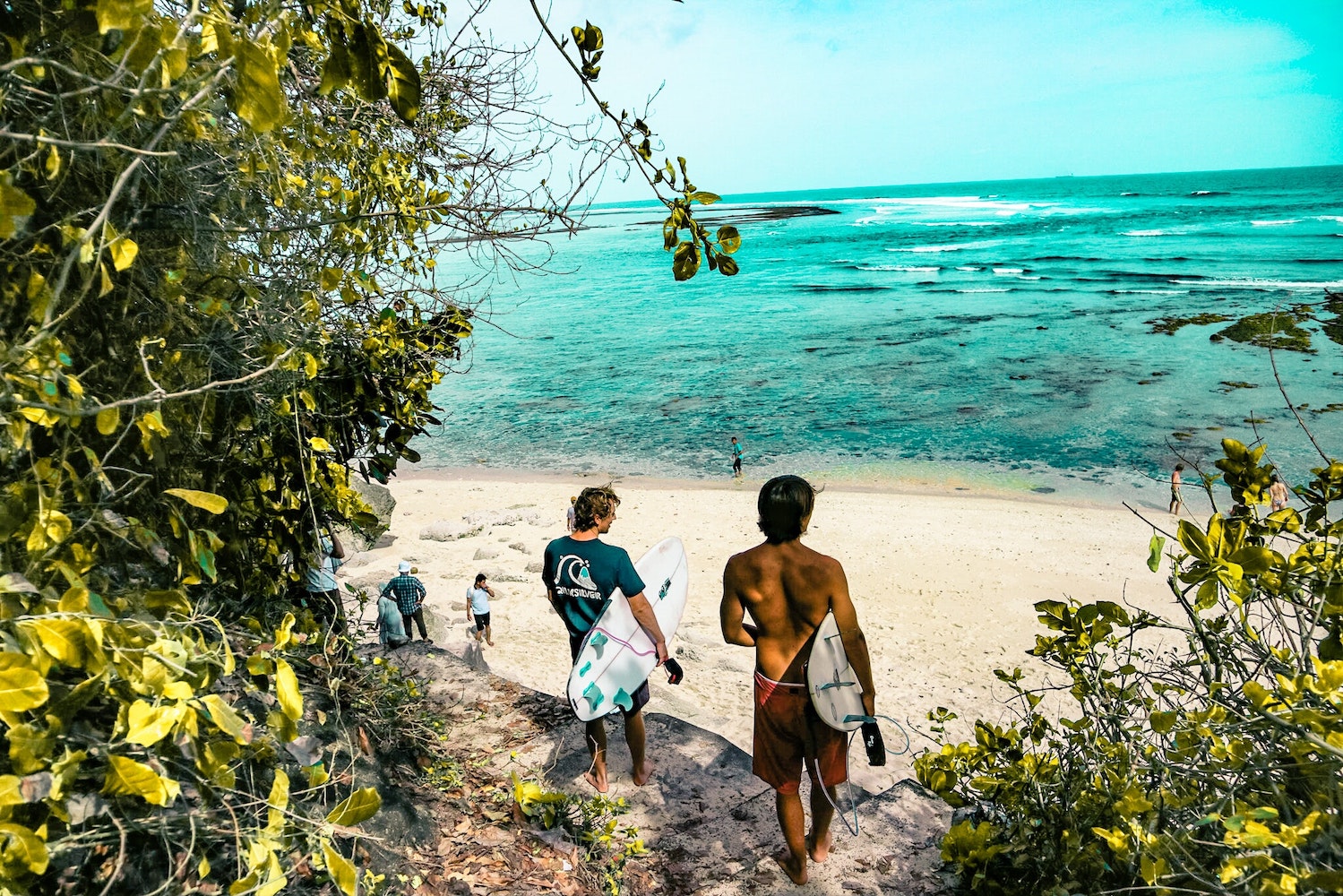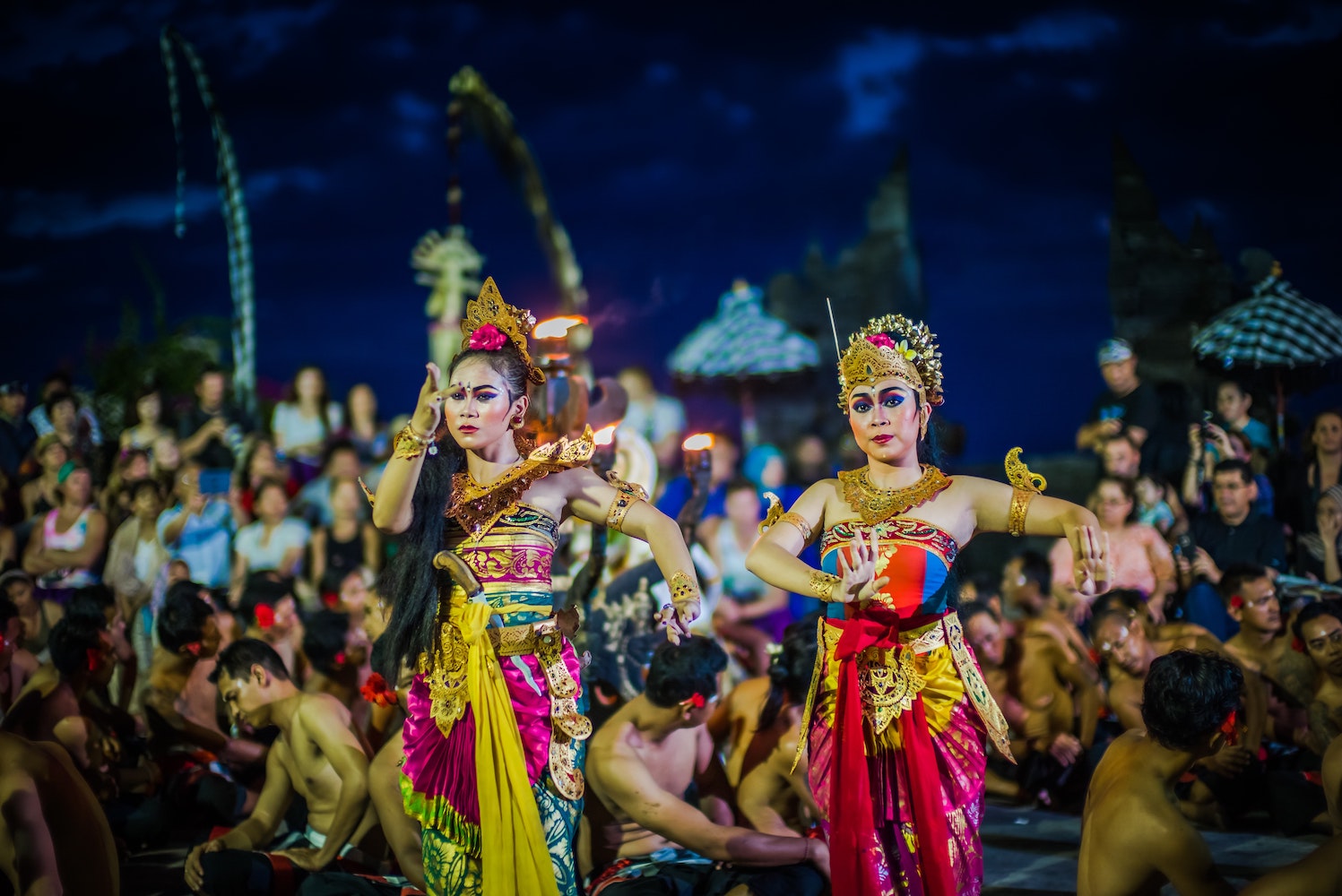There are few places in the world so deeply connected to and dependent on tourism as Bali, the Hindu-majority Indonesian island and TripAdvisor’s top global destination in 2017. While Bali has been able to keep some of its unique culture alive despite the ever-increasing waves of tourists from around the world, the impact is significant, since the island is only a little over 2,000 miles square. Imagine if almost 7 million people visited Delaware each year.
While parts of Bali remain Balinese, many parts of the island have become something else entirely. The all-night clubs, bars and pizza joints of Kuta, full of drunken Australians and Europeans visiting on cheap budget flights, resemble the Mediterranean nightlife destination of Ibiza. Canggu, a popular surf spot with brunch restaurants, cafes and shops is more akin to the beaches of Southern California or Australia’s Byron Bay. And Ubud, famous for its yoga studios, meditation centers and therapeutic massage parlors, has a similar vibe to Rishikesh or Dharamshala in India. What’s more, the exquisite resorts of Nusa Dua, with their own private golf courses and manicured beaches, echo the French Riviera or Cancun.
Bali, then, has merely become the backdrop for whatever visitors want it to be —whether it be spirituality, parties, or honeymoons. Tourism has changed the island to the point that more and more Balinese are starting to question whether it has all been worth it.
The all-night clubs, bars and pizza joints of Kuta … resemble the Mediterranean nightlife destination of Ibiza.
“I blame us, the Balinese, for letting this happen, for selling our lands, for getting the easy way out of poverty, for thinking that tourism is the only job that we can do it,” said Eve Tedja, a Balinese journalist. “We sold our rice fields and now buy our rice from another island.”

The trade-off was for one reason—money. Tourism now accounts for 80 percent of the economy —an astounding figure, but one that has also made it one of Indonesia’s richest islands. The per capita income here is nearly three times its neighboring province, Nusa Tenggara Barat. So when investors unveiled a massive $3 billion plan to build several artificial islands in Benoa Bay, it was expected that the development would be received in the same way countless other resorts and tourism-related infrastructure have over the past few decades—welcomed as an economic opportunity.
Not this time. Instead of acceptance, the project got unprecedented pushback. It was the tipping point for Bali. Amid growing concerns about water usage on the island, in a few weeks the initial backlash grew into a movement with a diverse coalition. Hindu priests joined punk rockers, surfers, activists and others in a series of public protests, online actions, and other events against the Benoa Bay project, all Balinese driven. For several months, Bali was up in arms about this real threat to the island’s natural and cultural heritage.
Tourism now accounts for 80 percent of the economy —an astounding figure
“It’s the accumulation of so many injustices towards local people in Bali,” said Jerinx, drummer for the popular Bali band Superman is Dead and a leader in the movement. “[The] first goal, of course, is to save our home, Bali. The nature, culture, social structure, the economy.”
To the surprise of many, they achieved the impossible—victory. In an unprecedented move, not just for Bali but for Indonesia, local concerns beat financial greed as the project’s permit was allowed to expire after the developer was unable to get an environmental impact assessment. While there is an effort to revive it, it will now have to overcome an entrenched, powerful movement to succeed.

So what’s next? Bali needs tourism, but overtourism could ruin Bali. Ironically,Bali’s main allure is its isolation. It was one of the last parts of Indonesia to fall under the control of the Netherlands, in 1908, more than a century after the Dutch claimed the spice islands of the Moluccas. Prior to then, it was a world apart from its Muslim-majority neighboring islands of Lombok and Java, and its indigenous form of Hinduism took on many Balinese layers far from the influence of India.
Even under Dutch control, Bali was segregated from the rest of the Dutch Indies, allowing its culture to continue to thrive under the patronage of its new colonial overlords, who wanted the island to become a living museum of classical culture. Mass tourism really only began in the 1960s, and in just a few decades, the island became one of the most visited places in Asia. Bali, the holiday island, is a relatively recent phenomenon but one that has changed the island immeasurably.
It will be tough to extricate the island’s livelihood from tourism, but there are some efforts to diversify the economy and protect, or at least give space for, Bali’s unique cultural heritage. The Benoa Bay movement is planning to tackle other development projects and push authorities to focus on environmental and cultural protections on the island. There is a re-emphasis on preserving and expanding native Balinese arts and crafts industries—and aim to tap into the high-end art market, rather than more cheap tourists souvenirs. New coworking spaces and incubators are aiming to create a nascent startup tech community. And an organic farming movement is spreading, seeking to both preserve the indigenous farming practices of locals, while creating a new income stream from high-quality food products, which can be sold in local restaurants but also across Southeast Asia.
Mass tourism really only began in the 1960s, and in just a few decades, the island became one of the most visited places in Asia.
There are cultural efforts too. BasaBali aims to preserve one crucial part of the island’s heritage—its language, Balinese. Years of integration with Indonesia and the use of the national language, Indonesian, in education, along with the need to speak English with incoming tourists, have left Balinese in a perilous state. BasaBali is creating a dictionary and education materials to promote Balinese language learning among the youth and preserve its use.
Perhaps the Benoa Bay is a win-win, especially if you take the long view. By protecting the island’s environment and shifting the mentality from accepting tourism at any cost to debating its role on the island, Bali may be able to both maintain its unique culture and remain a place that future tourists and generations will want to visit and experience. Maybe just not 7 million on such a tiny island.
Contributor
Nithin Coca is a longtime traveler and freelance journalist who covers culture, environment, and sustainability in Asia. His feature and news pieces have appeared in global media outlets including Al Jazeera, Quartz, Engadget, Foreign Policy, The Diplomat, Vice, and other regional publications in Asia and the United States.


